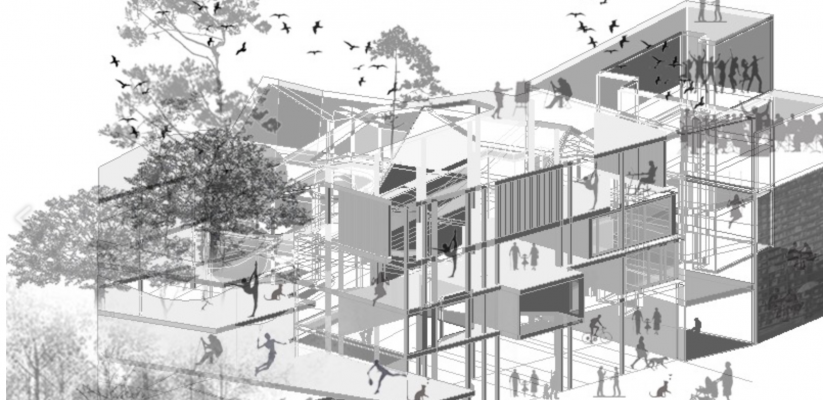Each year, our MORE exhibition celebrates the achievements of postgraduate students from the School of Architecture and Cities at Westminster. This event provides a platform for students to showcase their work, engage with industry professionals, and highlight how design can address global challenges.
Held both in-person and online, the exhibition reflects the diverse disciplines within the school to a worldwide audience, reinforcing the School’s international reach and engagement. Awards are given for projects demonstrating exceptional creativity, innovation, and impact, often sponsored by leading industry organisations and firms.
We spoke to some of this year’s standout students to learn more about their projects and future ambitions.
Zahra Mohammadi, Architecture MA – Moment of Stillness (2024)
Zahra’s thesis presents an architectural response to repairing environmental damage caused by human activity. Her innovative concept repurposes architectural waste, specifically corn cobs, to develop a “purifying skin”, a material designed to absorb air pollutants. This material is processed in low Earth orbit to ensure its purity and effectiveness before being applied to industrial sites to improve air quality. South Africa was chosen as the case study due to its high levels of air pollution from industrial activity. By integrating circular economy principles, the project turns waste into a resource, promoting inclusive cities that address both ecological degradation and socio-economic inequalities.
Zahra’s outstanding work earned her the Weston Williamson + Partners (WW+P) Award for Creative and Inclusive City Design. WW+P is a globally recognised architecture and urban design practice, with a team of over 250 architects, urban designers, and planners across nine international studios. The award highlights Zahra’s innovative approach to sustainable and inclusive urban development, aligning with WW+P’s commitment to designing cities that are both forward-thinking and socially responsible.
Zahra was attracted to study at Westminster due to the state-of-the-art facilities and the flexibility of the Architecture MA, which offers three specialised pathways. This structure allowed her to tailor the course to her interests and career aspirations. She chose the Cultural Identity and Globalisation Pathway, which examines how architecture responds to globalisation, socio-economic conditions, and cultural identity, equipping her with a deeper understanding of the role design plays in shaping diverse communities.
Reflecting on her experience, Zahra describes her time at Westminster as transformative, exceeding her expectations and providing invaluable learning opportunities.
Following graduation, she will be joining Weston Williamson + Partners and plans to pursue a PhD at Westminster.
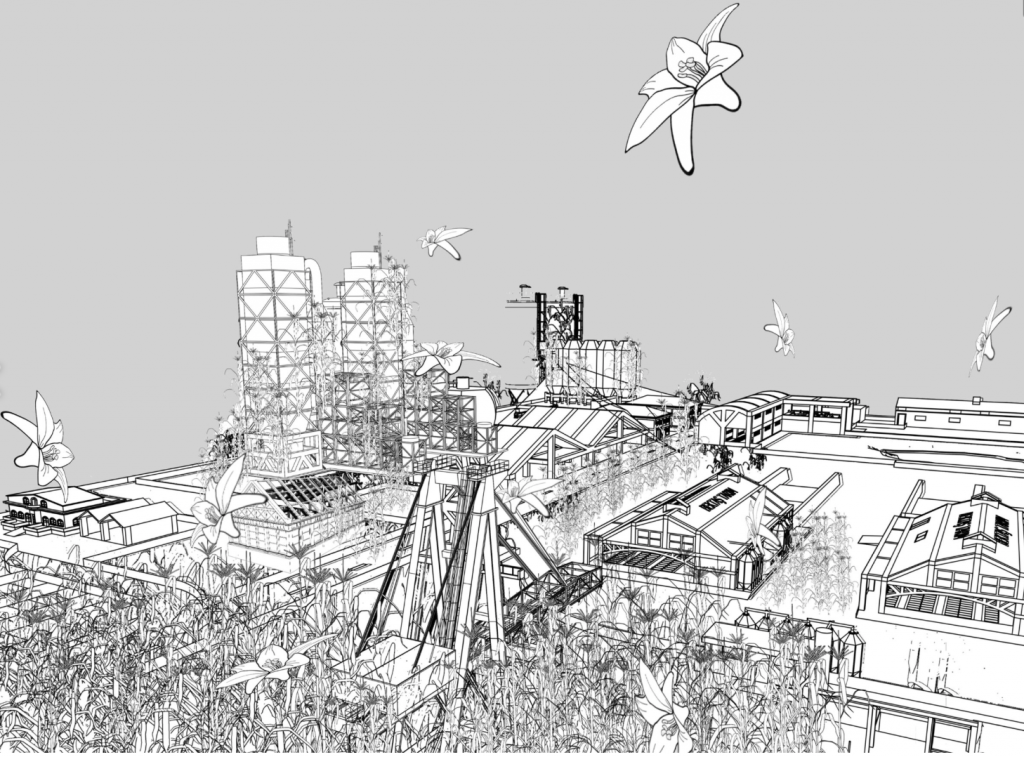
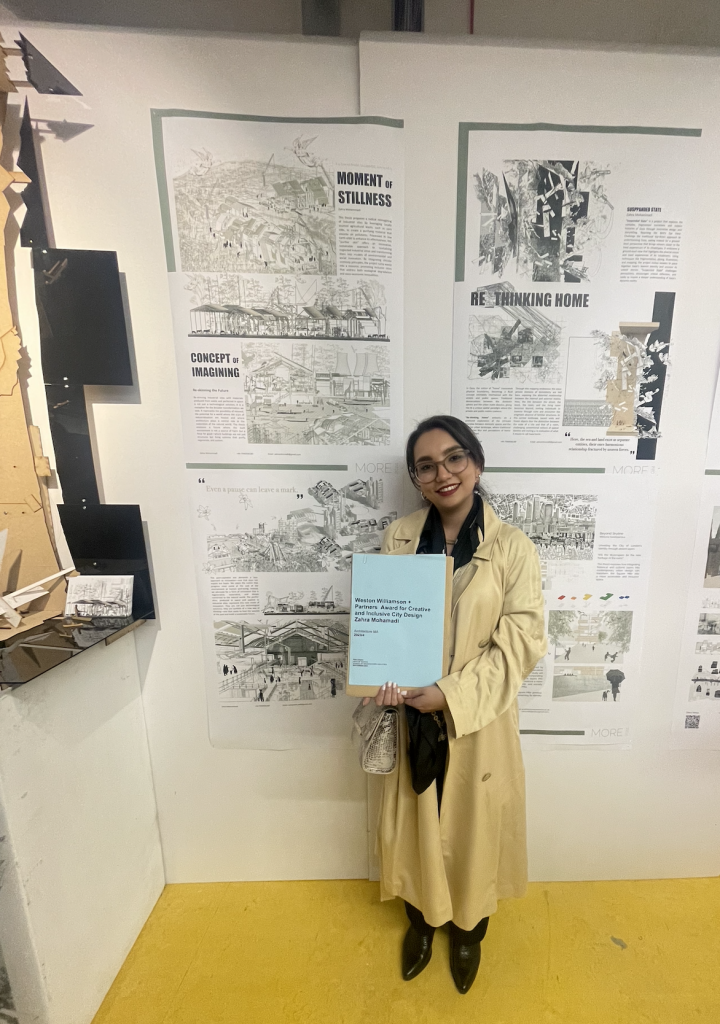
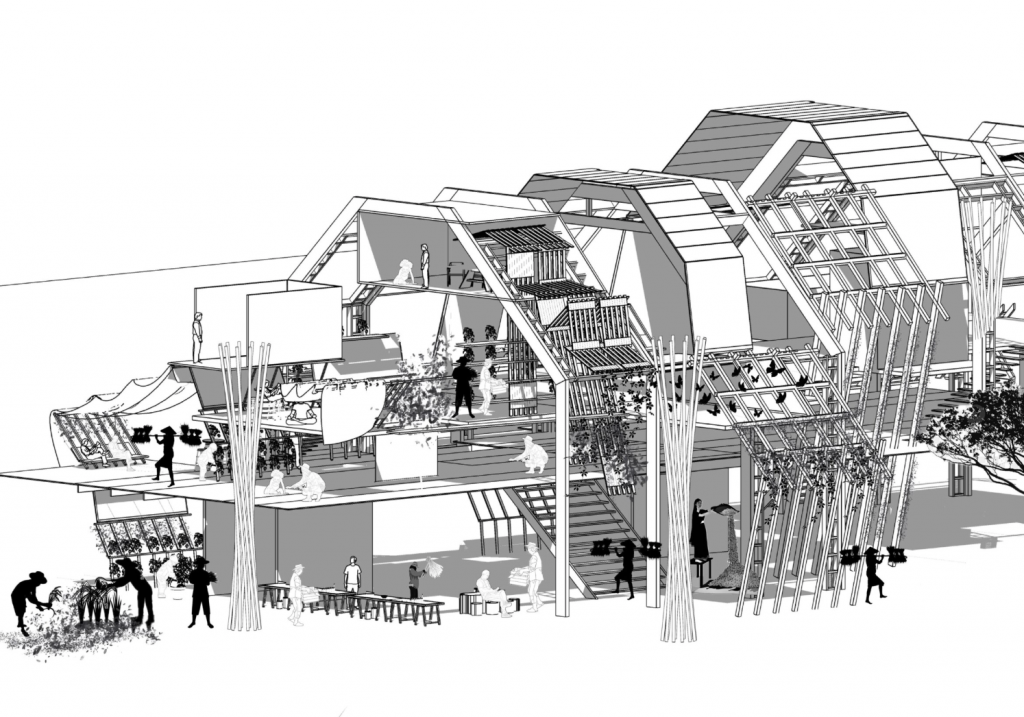
Bethany Faith Nias, Interior Architecture MA (2024) – To Be Human: The Reprieve
Bethany’s thesis combines written analysis and a design proposal, providing theoretical context to her creative work.
Her research delves into how design and storytelling can challenge the dehumanisation of illegal immigrants and marginalised communities in the UK, incorporating her passion for theatre.
Her design project focuses on The House of St Barnabas in Soho, a charity dedicated to supporting people affected by homelessness. Her vision transforms the space into a more permanent refuge, while introducing a temporary performance venue and creative outlet to foster community engagement and raise awareness.
Bethany thoroughly enjoyed her time at Westminster, particularly the support from tutors. The highlight of her studies was the collaborative studio culture at the Marylebone Campus.
Looking ahead, she aspires to build a career in set design and hopes to return to Westminster for a PhD after gaining industry experience.
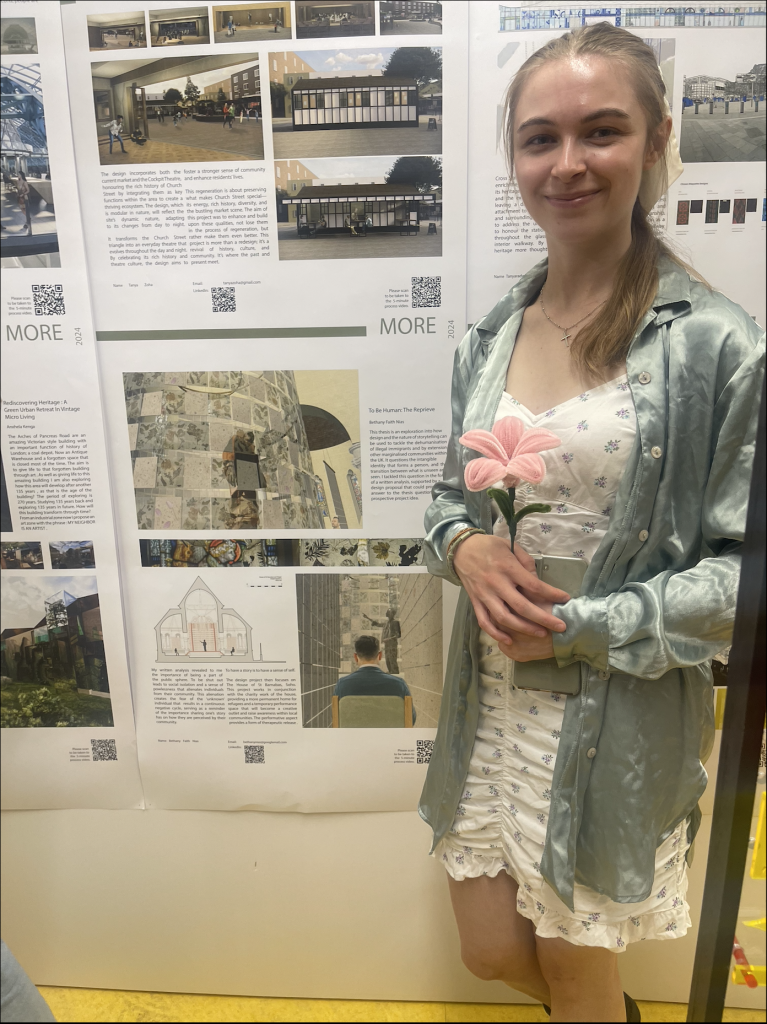
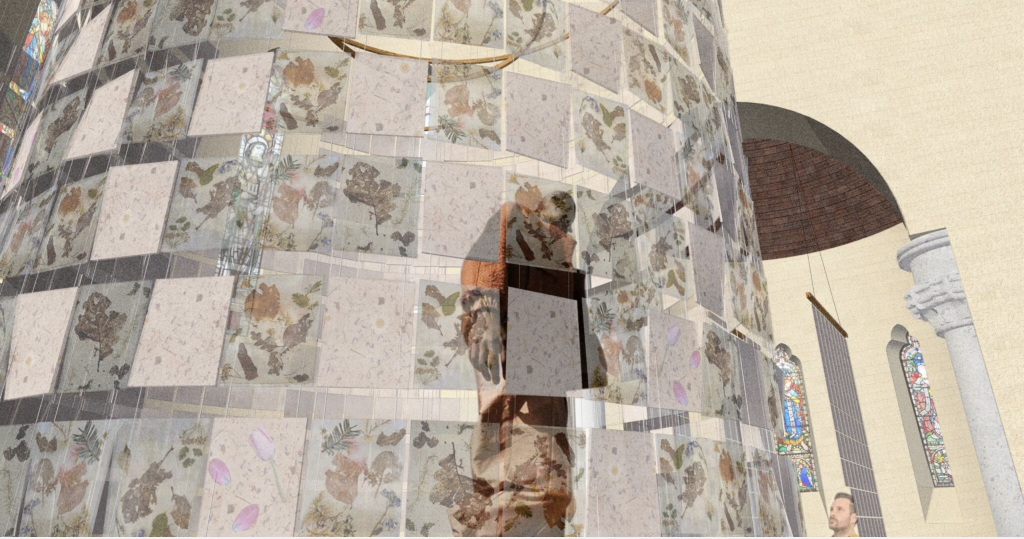
Zahra Jahangiri, Architecture and Environmental Design MSc (2024) – Circular Economy in Buildings
Zahra’s thesis explores the principles of circular economy in building design, a model that promotes reusing, repurposing, and recycling materials to reduce environmental impact in the construction industry.
Her research provides technical guidelines and design strategies for the six distinct building layers, helping architects and constructors create structures with greater circularity. She examines both new and existing buildings, identifying innovative ways to enhance sustainability and resource efficiency in the built environment.
Her thesis included a literature review and three case studies from the Netherlands, Denmark, and the UK, countries known for their innovative circular economy approaches. Through these case studies, she evaluates successes and limitations, extracting lessons that can be broadly applied.
Zahra’s work won Best Thesis, recognising its impact and contribution to sustainable architecture.
Reflecting on her experience, she describes it as challenging but rewarding, appreciating the support at Westminster and the central London location. Inspired by her research, she aims to pursue a career in circular economy architecture and hopes to publish a paper on her findings.
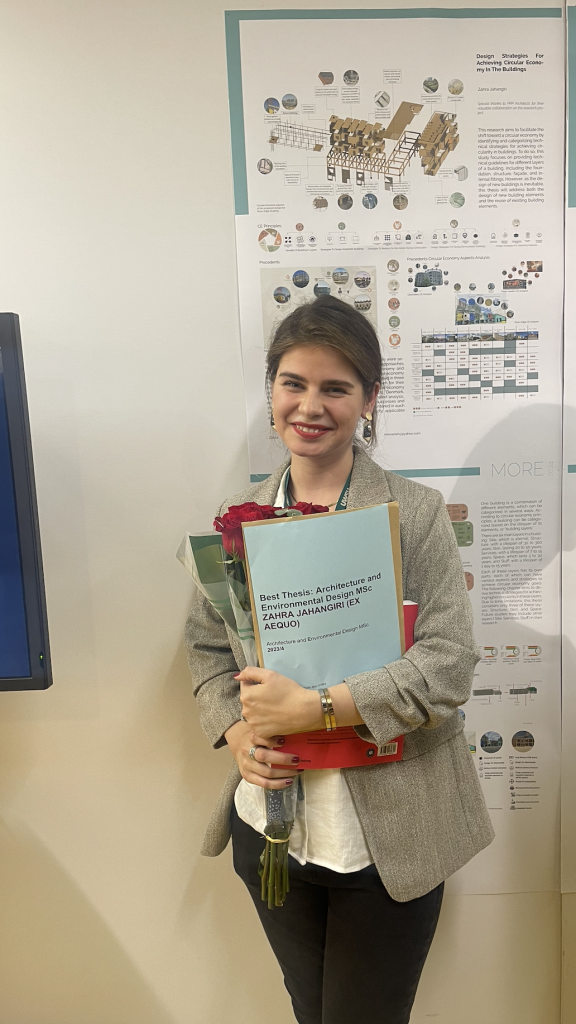
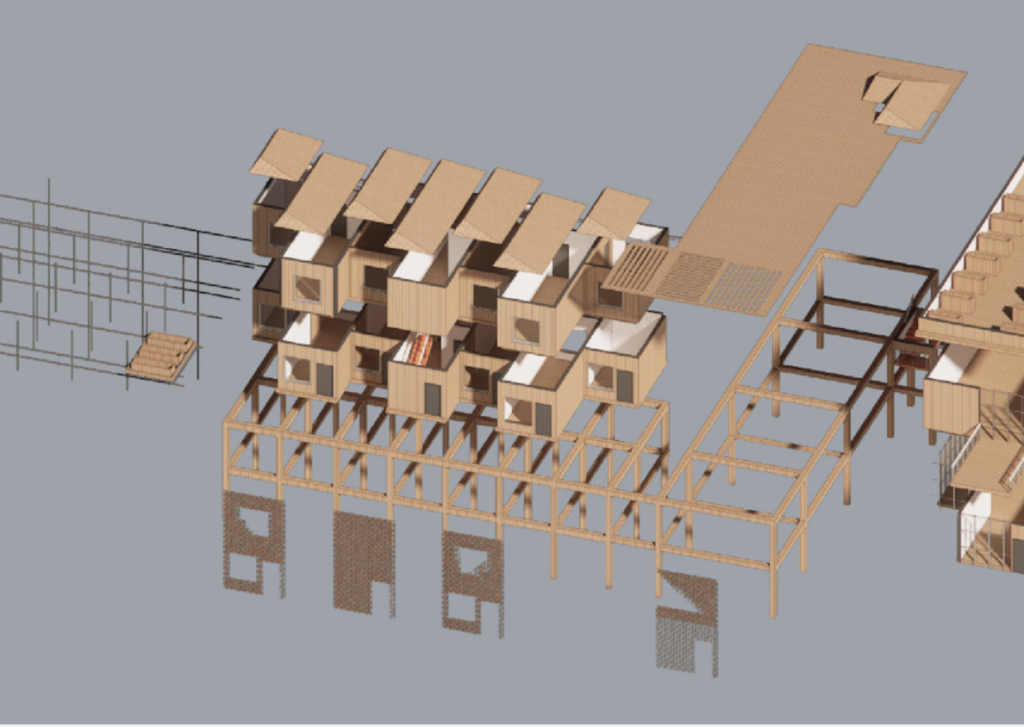
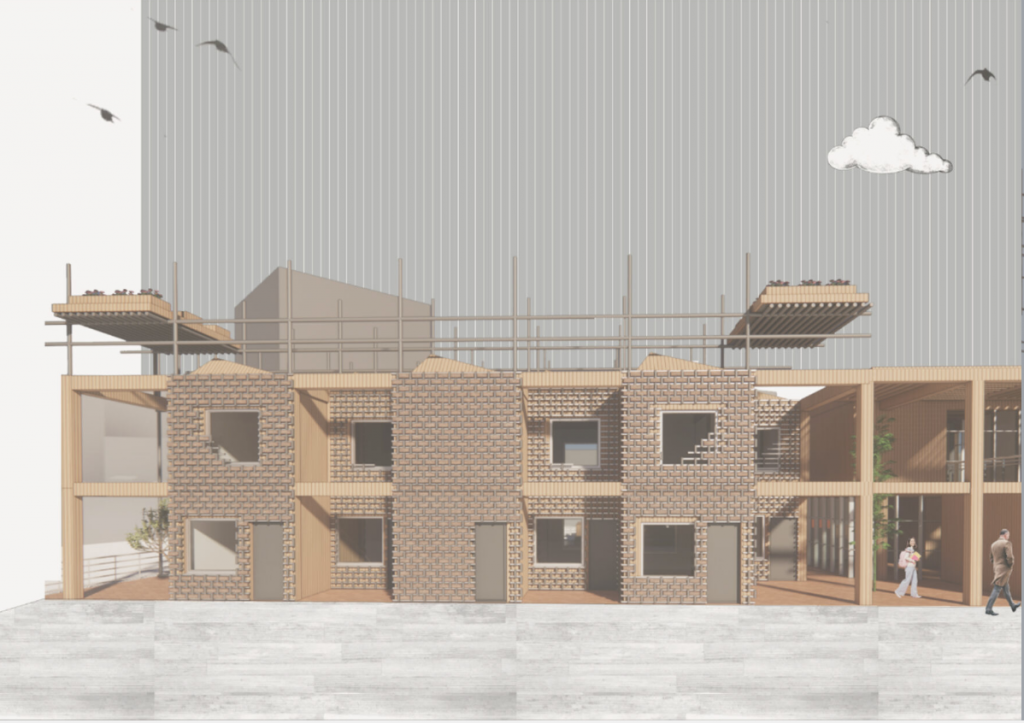
To find out more about the wide range of exciting student projects, visit the digital exhibition MORE 2024. You can also read more about our undergraduate projects from our OPEN 2024 exhibition.
About Westminster
As one of the most diverse universities in the UK, we are a global university with London energy, with more than 19,000 students from 169 countries.
To find out more about our courses featured in the MORE exhibition, visit the Architecture, Interiors and Urban Design and Transport and Logistics pages.
Header image: Oreinab Khoshbakht, Architecture MA (2024) – Roots & Roofs: Reimagining multi-generational co-living
- MORE 2025: Showcasing the Future of Architecture and Cities - October 27, 2025
- Opportunities at Westminster: My journey as a Student Ambassador - October 3, 2025
- OPEN 2025 Celebrating Talented Students - July 23, 2025
